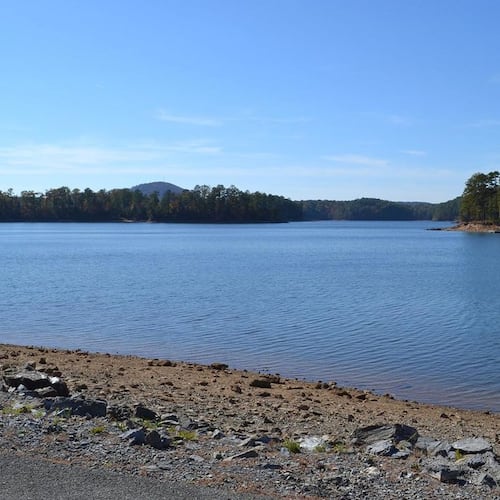Many schools now feature gardens and outdoor classroom spaces, but when a campus includes 15 acres of unspoiled woodlands, most of the nature can be turned into a learning environment. For kindergarteners and first-graders at Roswell’s High Meadows School, the trees and stream become their classroom during Forest Fridays.
Rather than having just a science period or reading time in the woods, Forest Fridays bring youngsters to school prepared to spend the day there. They hike about a quarter mile downhill to an open area by the creek, complete with tree-stump seats and a fire pit, where they spend hours continuing the lessons from their classroom. And more often than not, those lessons go well beyond the standard curriculum.
“Being out for a prolonged period of time means kids have to solve problems that might arise,” said teacher Shannon Hostetler, who teams with colleague Rebecca Drage to conduct the outings. “If they forget their water bottles, or if they don’t have their snacks with them, they learn from that pretty quickly. It’s a natural way to have real-life experiences and consequences.”
Dealing with those consequences also builds community differently than when everyone is seated at a desk, she added. “They begin to work together to solve problems. We see less dependency on the teachers as they work through things and persevere.”
But the primary objective is to focus on a hands-on curriculum, said Drage.
“We do all the things we’d be doing in the classroom, but everything takes on a different level of meaning,” she said. “For instance, if we’re doing measuring in math, we have rulers in the classroom but not in the forest. They figure out how to measure with something else, start making connections and engage in problem solving. Sometimes it’s not an easy fix.”
Students also have time to read and write in their journals, build a fort or work on an art project, but it’s often science that captures their attention.
“Everyone can find something meaningful to connect with, even a child who may not be drawn to the outdoors,” said Drage. “But science is 100% accessible when surrounded by nature.”
That’s the appeal for many of the students. First-graders William Brown and Olivia Bobbit love finding crawfish, salamanders and snails in the stream and learning how to care for them. Davis Biggler recently got a thrill when he discovered a turtle.
“And we work together and take care of our space,” said Livia Shapiro. “We unclog the river. We need it to be healthy.”
Even kids who didn’t think they were play-in-the-mud types now go home gritty and grinning.
“It’s not everybody’s comfort zone,” said Drage. “Kids have different levels of comfort with nature. So at the beginning of the year, we take the pulse of the kids and structure the day around their needs. We want them to have a positive interaction, and we want to meet them where they’re at – just like any other element of the classroom.”
Having a forest day has also paid off with health benefits, Drage said. “In the beginning, their little legs are tired after hiking, but they build stamina. Now, by end of the year, they can hike longer and farther.”
Information about High Meadows School is online at highmeadows.org.
SEND US YOUR STORIES.
Each week we look at programs, projects and successful endeavors at area schools, from pre-K to grad school. To suggest a story, contact H.M. Cauley at hm_cauley@yahoo.com or 770-744-3042.
About the Author
The Latest
Featured

